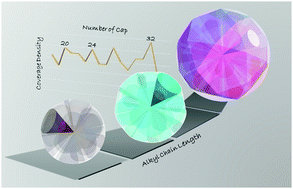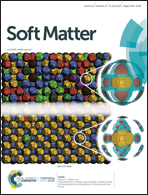Monodisperse micelles composed of poly(ethylene glycol) attached surfactants: platonic nature in a macromolecular aggregate†
Abstract
Among the many studies on micelles, dating back more than 100 years, we first found a series of monodisperse micelles: spherical micelles made from calix[4]arene surfactants exhibited monodispersity in aggregation number (Nagg) with values of 4, 6, 8, 12, and 20. We named these Platonic micelles because these values coincided with the face numbers of the Platonic solids. The preferred Nagg values were explained in relation to the mathematical Tammes problem: how to obtain the best coverage of a sphere surface with multiple identical circles. In this paper, we synthesized poly(ethylene glycol)-attached surfactants and carried out small-angle X-ray scattering (SAXS) and analytical ultracentrifugation (AUC) to determine the Nagg. We found that these polymeric surfactants also formed monodispersed micelles and Nagg discontinuously increased from 20 to 24, and then 32 with increasing the alkyl carbon numbers from 9 to 11 continuously. The determined Nagg was greater than 20 and the Platonic solid numbers. We assumed that the preferred Nagg values could be explained in relation to the Tammes problem as well.



 Please wait while we load your content...
Please wait while we load your content...
